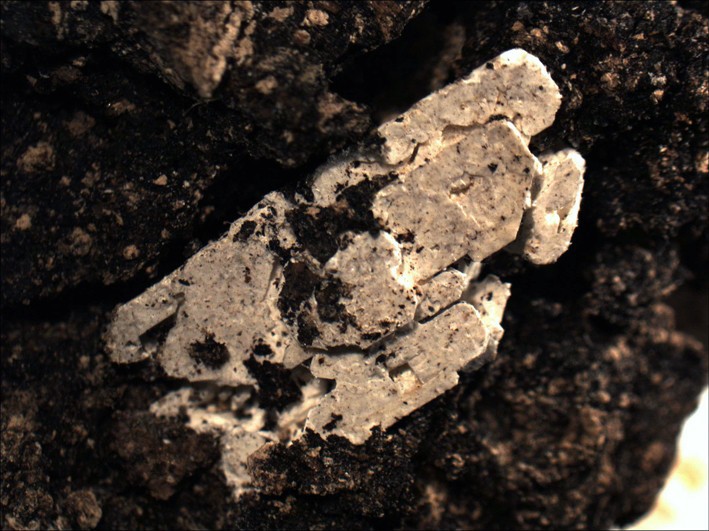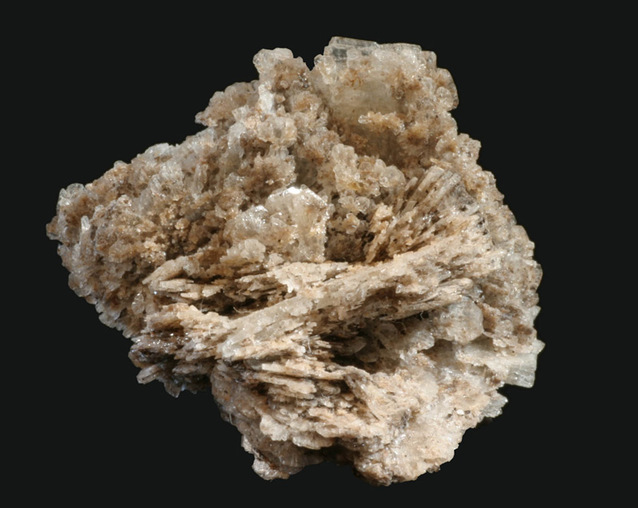Skipton Caves, Mount Widderin, Skipton, Corangamite Shire, Victoria, Australiai
| Regional Level Types | |
|---|---|
| Skipton Caves | Group of Caves |
| Mount Widderin | Hill |
| Skipton | Town |
| Corangamite Shire | Shire |
| Victoria | State |
| Australia | Country |
This page is currently not sponsored. Click here to sponsor this page.
Latitude & Longitude (WGS84):
37° 44' 12'' South , 143° 20' 52'' East
Latitude & Longitude (decimal):
Type:
Group of Caves
Köppen climate type:
Nearest Settlements:
| Place | Population | Distance |
|---|---|---|
| Cardigan | 647 (2015) | 42.0km |
| Delacombe | 3,356 (2015) | 44.2km |
| Sebastopol | 8,045 (2015) | 46.4km |
| Newington | 1,888 (2015) | 46.4km |
| Lake Wendouree | 1,471 (2015) | 48.6km |
Nearest Clubs:
Local clubs are the best way to get access to collecting localities
Local clubs are the best way to get access to collecting localities
| Club | Location | Distance |
|---|---|---|
| Ballarat & District Gem Club Inc | Ballarat, Victoria | 49km |
Mindat Locality ID:
205
Long-form identifier:
mindat:1:2:205:6
GUID (UUID V4):
670523b9-cf07-49cd-8c6b-6d957cb6d923
Other/historical names associated with this locality:
Skipton lava caves; Mt Widderin Caves
The Skipton Lava Caves are located on private property on the western flank of Mount Widderin, approximately 6 km south of Skipton in western Victoria. The caves are volcanic in origin, and are comprised of three large chambers, the largest being 58 by 19 metres with a maximum 9 m ceiling height. Narrow passages connect these chambers.
It is believed that locals were told about the existence of the cave by Aboriginal people in 1839. The earliest written report (1843) stated the caves were a favoured roosting and breeding site for bats, and "there are large mounds of [a] dark kind of excrescence, rising in five columns, 10 or 12 feet (3.66 m) high which is said to be bat dung. It contained shiny particles."
The large bat population is said to have disappeared in 1866 and never returned.
These thick guano beds soon attracted the attention of the early settlers because of the value as agricultural fertilizer, and the deposit was all but exhausted by 1895.
In modern times, very few traces remain of any guano or mineralisation, and collecting or removal of any remaining material is prohibited.
The Skipton Lava Caves are the type locality for 4 minerals: dittmarite, hannayite, newberyite, and schertelite.
Select Mineral List Type
Standard Detailed Gallery Strunz Chemical ElementsCommodity List
This is a list of exploitable or exploited mineral commodities recorded at this locality.Mineral List
12 valid minerals. 4 (TL) - type locality of valid minerals.
Detailed Mineral List:
| ⓘ Brushite Formula: Ca(PO3OH) · 2H2O Description: Brushite at Skipton Caves occurs in two forms:
1. as small pale brown needles and blades up to 3 mm in length usually associated with struvite as either random or inwardly radial orientations.
2. as pale yellow powder in seams and pockets on basalt. References: |
| ⓘ Dittmarite (TL) Formula: (NH4)Mg(PO4) · H2O Type Locality: Description: Occurs in bat guano.
Was originally found "in the form of small rhombic transparent crystals". The original material is lost and no other specimens appear to have been collected. References: |
| ⓘ Gypsum Formula: CaSO4 · 2H2O Description: Occurs mainly as a damp off-white to pale yellow powder, also rarely as microscopic, equant water-clear crystals. |
| ⓘ Hannayite (TL) Formula: (NH4)2Mg3H4(PO4)4 · 8H2O Type Locality: Description: Occurs in bat guano.
Hannayite occurs as slender, translucent, near-colourless to pale yellow prisms reaching a maximum size of 12mm long, 2mm wide and approximately 1mm thick. |
| ⓘ Magnesite Formula: MgCO3 |
| ⓘ Newberyite (TL) Formula: Mg(PO3OH) · 3H2O Type Locality: Description: Newberyite crystals from Skipton Caves show 3 different habits
1- the crystals are tabular, translucent to opaque and grey-brown, with faces of the dominant form being uneven and dull. Complex twinning on these faces produces irregular rosettes of intergrown plates or roughly spheroidal shape which may reach 5 cm across.
2- these crystals are glassy, internally fractured, have lustrous faces and range from pale yellow to a dirty brown colour. Inclusions of guano particles are common. These crystals are usually 0.1-10 mm.
3- less common habit shows features with characteristics of the tabular form and equant habits. These form "skeleton" crystals, in reference to the set of partly separated plates developed parallel to the brachy-pinacoids. References: |
| ⓘ Opal Formula: SiO2 · nH2O Description: Parts of the walls in the chambers are covered with small brown stalactites of opaline silica which are no more than 25 mm long and 6 mm diameter. |
| ⓘ Sasaite Formula: (Al,Fe3+)14(PO4)11(SO4)(OH)7 · 83H2O Description: Sasaite has been found at Skipton Caves as a white clay-like deposit on the surface and in cracks in dark consolidated floor material. It ranges in texture from soft white powdery to compact pale pinkish yellow. It was not found associated with the other phosphate minerals. |
| ⓘ Schertelite (TL) Formula: (NH4)2MgH2(PO4)2 · 4H2O Type Locality: Description: Occurs in small colourless flat crystals of somewhat indistinct character. The original material has been lost. References: |
| ⓘ Stercorite ? Formula: (NH4)Na(PO3OH) · 4H2O Description: MacIvor (1902) reported sodium ammonium monohydrogen orthophosphate in the aqueous extract separated from guano by repeated crystallisations. This may indicate transient existence of the mineral stercorite in the caves. |
| ⓘ Struvite Formula: (NH4)Mg(PO4) · 6H2O Description: Occurs in bat guano.
Skipton struvite occurs as glassy colourless to very pale yellow triangular prism-shaped crystals, which are usually less than 12 mm across, but may reach 15 mm. The larger crystals are usually etched. Crystals of struvite alter to white opaque newberyite and become fragile upon exposure to air over a period of months to years.
Has been found associated with brushite. References: |
| ⓘ Taranakite Formula: (K,NH4)Al3(PO4)3(OH) · 9H2O Description: Reported as a white powdery coating on the exposed surfaces of basalt, and as 0.5 mm sub-spherical growths in basalt boulders. |
Gallery:
List of minerals arranged by Strunz 10th Edition classification
| Group 4 - Oxides and Hydroxides | |||
|---|---|---|---|
| ⓘ | Opal | 4.DA.10 | SiO2 · nH2O |
| Group 5 - Nitrates and Carbonates | |||
| ⓘ | Magnesite | 5.AB.05 | MgCO3 |
| Group 7 - Sulphates, Chromates, Molybdates and Tungstates | |||
| ⓘ | Gypsum | 7.CD.40 | CaSO4 · 2H2O |
| Group 8 - Phosphates, Arsenates and Vanadates | |||
| ⓘ | Newberyite (TL) | 8.CE.10 | Mg(PO3OH) · 3H2O |
| ⓘ | Dittmarite (TL) | 8.CH.20 | (NH4)Mg(PO4) · H2O |
| ⓘ | Taranakite | 8.CH.25 | (K,NH4)Al3(PO4)3(OH) · 9H2O |
| ⓘ | Schertelite (TL) | 8.CH.30 | (NH4)2MgH2(PO4)2 · 4H2O |
| ⓘ | Hannayite (TL) | 8.CH.35 | (NH4)2Mg3H4(PO4)4 · 8H2O |
| ⓘ | Struvite | 8.CH.40 | (NH4)Mg(PO4) · 6H2O |
| ⓘ | Stercorite ? | 8.CJ.05 | (NH4)Na(PO3OH) · 4H2O |
| ⓘ | Brushite | 8.CJ.50 | Ca(PO3OH) · 2H2O |
| ⓘ | Sasaite | 8.DB.55 | (Al,Fe3+)14(PO4)11(SO4)(OH)7 · 83H2O |
List of minerals for each chemical element
| H | Hydrogen | |
|---|---|---|
| H | ⓘ Brushite | Ca(PO3OH) · 2H2O |
| H | ⓘ Dittmarite | (NH4)Mg(PO4) · H2O |
| H | ⓘ Gypsum | CaSO4 · 2H2O |
| H | ⓘ Hannayite | (NH4)2Mg3H4(PO4)4 · 8H2O |
| H | ⓘ Newberyite | Mg(PO3OH) · 3H2O |
| H | ⓘ Opal | SiO2 · nH2O |
| H | ⓘ Sasaite | (Al,Fe3+)14(PO4)11(SO4)(OH)7 · 83H2O |
| H | ⓘ Schertelite | (NH4)2MgH2(PO4)2 · 4H2O |
| H | ⓘ Stercorite | (NH4)Na(PO3OH) · 4H2O |
| H | ⓘ Struvite | (NH4)Mg(PO4) · 6H2O |
| H | ⓘ Taranakite | (K,NH4)Al3(PO4)3(OH) · 9H2O |
| C | Carbon | |
| C | ⓘ Magnesite | MgCO3 |
| N | Nitrogen | |
| N | ⓘ Dittmarite | (NH4)Mg(PO4) · H2O |
| N | ⓘ Hannayite | (NH4)2Mg3H4(PO4)4 · 8H2O |
| N | ⓘ Schertelite | (NH4)2MgH2(PO4)2 · 4H2O |
| N | ⓘ Stercorite | (NH4)Na(PO3OH) · 4H2O |
| N | ⓘ Struvite | (NH4)Mg(PO4) · 6H2O |
| N | ⓘ Taranakite | (K,NH4)Al3(PO4)3(OH) · 9H2O |
| O | Oxygen | |
| O | ⓘ Brushite | Ca(PO3OH) · 2H2O |
| O | ⓘ Dittmarite | (NH4)Mg(PO4) · H2O |
| O | ⓘ Gypsum | CaSO4 · 2H2O |
| O | ⓘ Hannayite | (NH4)2Mg3H4(PO4)4 · 8H2O |
| O | ⓘ Magnesite | MgCO3 |
| O | ⓘ Newberyite | Mg(PO3OH) · 3H2O |
| O | ⓘ Opal | SiO2 · nH2O |
| O | ⓘ Sasaite | (Al,Fe3+)14(PO4)11(SO4)(OH)7 · 83H2O |
| O | ⓘ Schertelite | (NH4)2MgH2(PO4)2 · 4H2O |
| O | ⓘ Stercorite | (NH4)Na(PO3OH) · 4H2O |
| O | ⓘ Struvite | (NH4)Mg(PO4) · 6H2O |
| O | ⓘ Taranakite | (K,NH4)Al3(PO4)3(OH) · 9H2O |
| Na | Sodium | |
| Na | ⓘ Stercorite | (NH4)Na(PO3OH) · 4H2O |
| Mg | Magnesium | |
| Mg | ⓘ Dittmarite | (NH4)Mg(PO4) · H2O |
| Mg | ⓘ Hannayite | (NH4)2Mg3H4(PO4)4 · 8H2O |
| Mg | ⓘ Magnesite | MgCO3 |
| Mg | ⓘ Newberyite | Mg(PO3OH) · 3H2O |
| Mg | ⓘ Schertelite | (NH4)2MgH2(PO4)2 · 4H2O |
| Mg | ⓘ Struvite | (NH4)Mg(PO4) · 6H2O |
| Al | Aluminium | |
| Al | ⓘ Sasaite | (Al,Fe3+)14(PO4)11(SO4)(OH)7 · 83H2O |
| Al | ⓘ Taranakite | (K,NH4)Al3(PO4)3(OH) · 9H2O |
| Si | Silicon | |
| Si | ⓘ Opal | SiO2 · nH2O |
| P | Phosphorus | |
| P | ⓘ Brushite | Ca(PO3OH) · 2H2O |
| P | ⓘ Dittmarite | (NH4)Mg(PO4) · H2O |
| P | ⓘ Hannayite | (NH4)2Mg3H4(PO4)4 · 8H2O |
| P | ⓘ Newberyite | Mg(PO3OH) · 3H2O |
| P | ⓘ Sasaite | (Al,Fe3+)14(PO4)11(SO4)(OH)7 · 83H2O |
| P | ⓘ Schertelite | (NH4)2MgH2(PO4)2 · 4H2O |
| P | ⓘ Stercorite | (NH4)Na(PO3OH) · 4H2O |
| P | ⓘ Struvite | (NH4)Mg(PO4) · 6H2O |
| P | ⓘ Taranakite | (K,NH4)Al3(PO4)3(OH) · 9H2O |
| S | Sulfur | |
| S | ⓘ Gypsum | CaSO4 · 2H2O |
| S | ⓘ Sasaite | (Al,Fe3+)14(PO4)11(SO4)(OH)7 · 83H2O |
| K | Potassium | |
| K | ⓘ Taranakite | (K,NH4)Al3(PO4)3(OH) · 9H2O |
| Ca | Calcium | |
| Ca | ⓘ Brushite | Ca(PO3OH) · 2H2O |
| Ca | ⓘ Gypsum | CaSO4 · 2H2O |
| Fe | Iron | |
| Fe | ⓘ Sasaite | (Al,Fe3+)14(PO4)11(SO4)(OH)7 · 83H2O |
Other Regions, Features and Areas containing this locality
This page contains all mineral locality references listed on mindat.org. This does not claim to be a complete list. If you know of more minerals from this site, please register so you can add to our database. This locality information is for reference purposes only. You should never attempt to
visit any sites listed in mindat.org without first ensuring that you have the permission of the land and/or mineral rights holders
for access and that you are aware of all safety precautions necessary.











Skipton Caves, Mount Widderin, Skipton, Corangamite Shire, Victoria, Australia